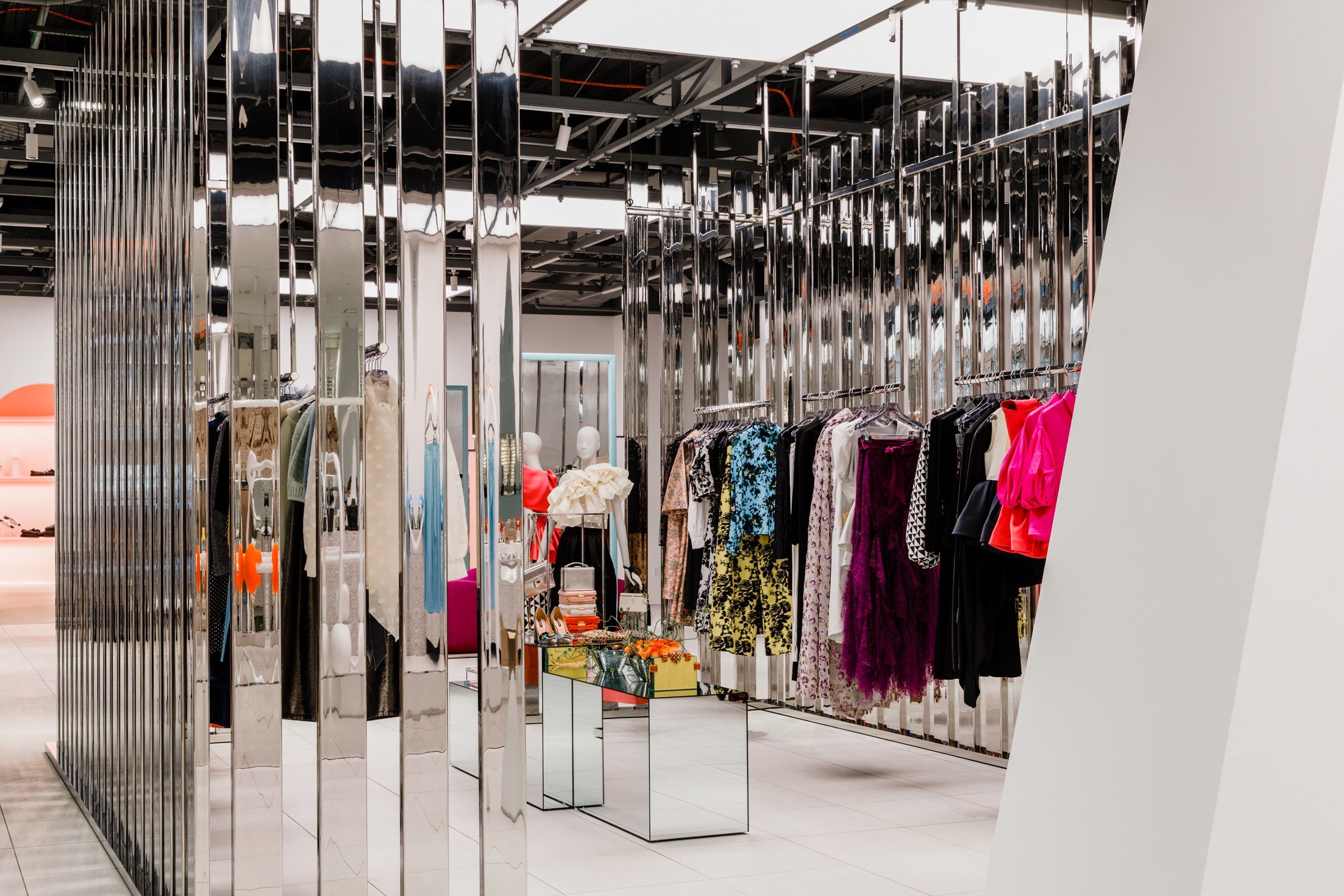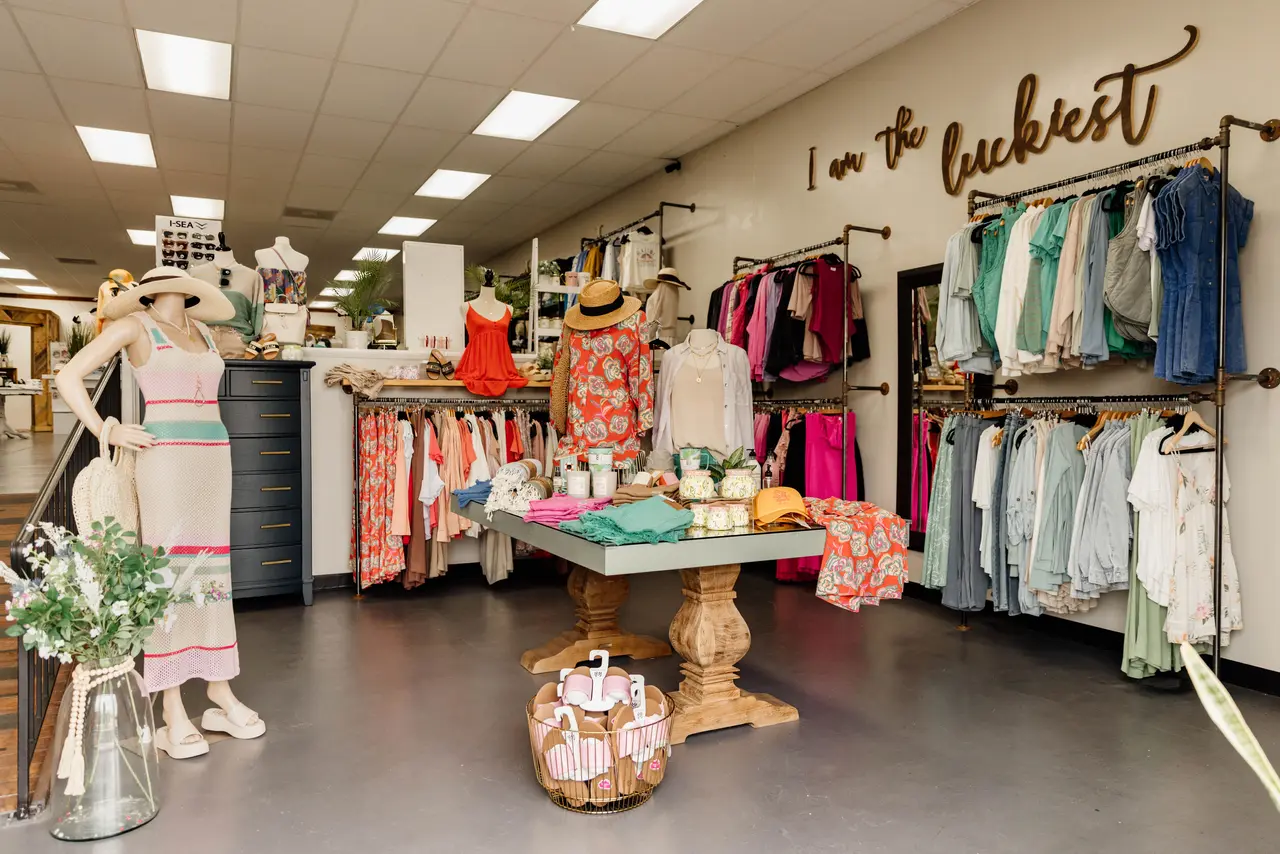Discover the Latest Patterns in Boutique Fashion for every single Period
Discover the Latest Patterns in Boutique Fashion for every single Period
Blog Article
Discovering the Advancement and Impact of Garments on Modern Fashion Trends
The advancement of apparel has substantially influenced modern-day style patterns, merging historical precedents with innovative developments. Legendary figures like Coco Chanel and Yves Saint Laurent transformed the style market by presenting principles that prioritize convenience and access, which proceed to resonate today.
Historical Style Influencers
In the tapestry of fashion history, particular figures have left an indelible mark, forming the patterns and styles that specify whole ages. Coco Chanel, an innovative developer, redefined women's style by introducing comfy, stylish apparel that departed from limiting bodices. Her famous Chanel fit and little black outfit have actually ended up being timeless staples in closets worldwide. In A Similar Way, Christian Dior's post-war "Make over" in 1947, with its celebration of femininity via full skirts and cinched midsections, marked a return to luxury and has actually continued to affect designers.
Elsa Schiaparelli is an additional critical number, renowned for her avant-garde designs that incorporated surrealist art, working together with Salvador Dalí to develop wayward items that challenged traditional appearances. Her innovative use shade and vibrant patterns reverberates in modern fashion. Yves Saint Laurent, meanwhile, democratized haute couture with prêt-à-porter collections, bringing path styles to the masses and setting a criterion for modern ready-to-wear lines.
These visionaries, amongst others, not just revolutionized fashion in their times but likewise established enduring patterns that resonate in today's fashion business, giving a structure whereupon contemporary developers remain to develop and introduce. Their traditions emphasize the value of creativity and daring in vogue's ever-evolving narrative.
Technological Advancements in Fashion
In the middle of the dynamic landscape of the apparel industry, technical improvements stand at the forefront of innovation, improving exactly how designers produce and customers engage with style. The assimilation of 3D printing has transformed design procedures, allowing designers to try out complex structures and lasting materials that were previously inconceivable. This innovation assists in fast prototyping, minimizing waste and quickening manufacturing times.

Smart textiles, embedding technology right into fabrics, are also changing the industry. Developments like self-cleaning and temperature-regulating textiles offer boosted capability and convenience. Wearable innovation, integrating functions like physical fitness monitoring and interaction, adds a new dimension to fashion, merging aesthetics with functionality.
Cultural Changes and Design
As technological innovations continue to improve the apparel industry, cultural changes are equally prominent, redefining style and customer preferences. In recent years, the rise of social networks systems has actually sped up the dissemination of worldwide fashion trends, allowing varied social influences to converge and exist together. This electronic interconnectivity has promoted the rapid exchange of ideas, bring about a more comprehensive and eclectic analysis of design that reflects the complex nature of contemporary society.
Social understanding and admiration have actually triggered developers to attract inspiration from a wider range of historic and ethnic contexts, integrating typical themes with contemporary visual appeals. This combination has resulted in fashion that reverberates with a bigger target market, promoting a sense of identity and belonging across different demographics. Furthermore, the increasing need for customization has actually driven brands to supply customizable alternatives, making it possible for consumers to share uniqueness while mirroring their cultural heritage.
Furthermore, changing societal values have actually affected style, with inclusivity and diversity coming to be central themes. The sector has started to embrace versions and influencers of various body kinds, ethnicities, and gender identifications, challenging conventional elegance standards. This improvement highlights the power of cultural changes fit the future of style, as style comes to be an extra authentic expression of individual and collective identity.
Sustainability and Modern Layout
While the fashion market proceeds to evolve, the essential for sustainability has actually become progressively urgent, influencing modern-day design practices. The increase of sluggish fashion, which stresses top quality over quantity, motivates consumers to invest in timeless items rather than short-term trends.
Furthermore, modern layout is identified by its advancement in lessening waste and promoting circularity. Techniques such as zero-waste pattern cutting and 3D knitting are acquiring grip, permitting developers to produce garments with marginal fabric waste. Furthermore, brands are adopting clear supply chains, making certain responsibility and fostering customer depend on. This technique not only minimizes ecological influence however likewise boosts the social duty of style houses.

Future Trends in Style

Sustainability will remain to be a driving force in forming future fashion fads. The sector is progressively adopting environmentally friendly materials and moral manufacturing approaches, responding to an expanding customer need for liable methods. Technologies such as bio-fabricated materials and closed-loop recycling systems are set to redefine how clothing is generated and consumed, reducing ecological impact while maintaining style and high quality.
Social changes, including the rise of inclusivity and variety, will also play a critical role. As culture comes to be much more aware of social concerns, fashion is expected to come to be a platform for expression and adjustment. Developers will likely concentrate on producing collections that mirror a wider range of identities and experiences, championing representation and availability.
Conclusion
The advancement of clothes considerably affects modern style trends, where historical impacts combine with contemporary styles. Secret figures like Coco Chanel and Find Out More Yves Saint Laurent have redefined style, while technological technologies such as 3D printing and clever textiles increase creative opportunities. Social shifts in the direction of inclusivity and sustainability oblige brands to embrace ethical practices and welcome variety. This ongoing development emphasizes style's duty as a mirror to social worths and technical innovation, recommending a future rich with advancement and inclusivity.
The evolution of clothes has significantly affected contemporary fashion trends, combining historic precedents with sophisticated advancements.In the middle of the dynamic landscape of the fashion industry, technological innovations stand at the center of technology, improving just how designers create and consumers involve with style.While the fashion market proceeds to advance, the necessary for sustainability has come to be progressively urgent, influencing modern design methods. As sustainability ends up being find more information ingrained in modern-day style, it leads the means for a much more liable and aware style market.
The development of garments dramatically impacts modern-day fashion trends, where historical influences combine with contemporary styles.
Report this page